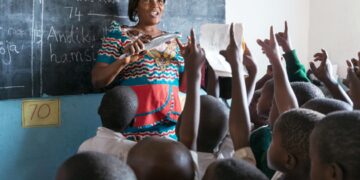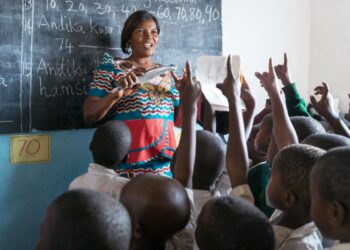In many parts of Africa and Asia, the dream of universal education remains out of reach for millions of children. A significant yet often overlooked factor contributing to the alarming number of out-of-school children is the high birth rate in these regions. Large family sizes, combined with widespread poverty, have created a vicious cycle that keeps children away from classrooms. Addressing this issue requires more than just educational reforms; it demands a deeper focus on family planning, birth control, and policies that empower families to invest in their children’s futures.
The Link Between High Birth Rates and Out-of-School Children
In countries across sub-Saharan Africa and South Asia, families often have more children than they can afford to support. For many parents, particularly in rural areas, large families are seen as a source of economic security, with children expected to contribute to household labor. However, this traditional mindset comes at a cost—many children never set foot in a classroom or drop out early due to financial constraints.
According to UNESCO, Africa has the highest rate of out-of-school children globally, with millions of children missing out on basic education. Similarly, in parts of Asia, particularly South Asia, the numbers are equally concerning. Parents struggling to make ends meet often prioritize food and survival over education. In families with six or more children, school fees, uniforms, and other educational expenses quickly become unaffordable, forcing children—especially girls—to stay home or work to support their families.
The Role of Birth Control and Family Planning in Breaking the Cycle
One of the most effective ways to reduce the number of out-of-school children is to address the root cause: large family sizes. Access to birth control and family planning services can help parents have fewer children, allowing them to invest more in each child’s education and well-being. Yet, in many parts of Africa and Asia, cultural, religious, and societal norms make it difficult for families to access or accept birth control methods.
Governments and non-governmental organizations (NGOs) need to prioritize education about contraception and make family planning services more accessible, especially in rural and underserved areas. Birth control methods such as contraceptive pills, intrauterine devices (IUDs), and condoms can give families control over the number and spacing of their children, reducing the financial strain on households and increasing the likelihood that children will attend school.
Programs that focus on women’s empowerment are particularly effective. Studies show that when women have access to education and contraception, they tend to have fewer children and are more likely to prioritize their children’s education.
The Gender Gap: How High Birth Rates Affect Girls’ Education
In many cases, the burden of large families falls disproportionately on girls. When resources are scarce, families often choose to send boys to school while girls stay home to care for younger siblings or help with household chores. This perpetuates gender inequality and limits girls’ opportunities to break free from poverty through education.
Family planning initiatives that reduce birth rates can help close this gender gap by making it more feasible for families to send all their children—girls included—to school. Education campaigns should also challenge cultural norms that deprioritize girls’ education and highlight the long-term benefits of educating both boys and girls.
Balancing Tradition and Progress: The Path Forward
Cultural beliefs about family size and the value of children as economic assets won’t change overnight. Governments, educators, and community leaders must work together to raise awareness about the importance of birth control and the impact of large family sizes on education.
Incentivizing education through government programs, such as free school meals or conditional cash transfers for families who keep their children in school, can also help ease the financial burden on families with many children. At the same time, policies must ensure that family planning services are affordable, accessible, and culturally sensitive.
Conclusion: Investing in Families for a Brighter Future
High birth rates in Africa and Asia are fueling the education crisis by increasing the number of out-of-school children. Breaking this cycle requires a holistic approach that includes family planning, access to birth control, and policies that prioritize education for all children, regardless of gender or socio-economic status. By empowering families to have fewer children and invest more in their education, we can create a future where every child has the opportunity to learn, grow, and contribute to society. The key lies in responsible policies, cultural shifts, and a collective commitment to breaking the cycle of poverty through education
____________________ Davidson Abraham, is a Dubai-based sports and business writer with about 8 years experience across sports, media & education; currently serving as a ThisDay (GamingWeek) Analyst/Correspondent. He has written with Editors of key media houses, supported international faculties, and involved with social media managing & content development for key institutions in UAE, and Global Education Group partner Universities. He has also written on education, Blockchain, Fintech, Corporate Governance, Sports and Global Politics, as well as assisting with research, book writing and marketing. Davidson is a proud alumnus of Gulf American University, UAE (a part of Girne American University, North Cyprus), and assists students with gaining scholarships for international studies in different universities. Linkedin: https://www.linkedin.com/in/davidson-a-289316233/ Email: davisiano.adm@gmail.com Whatsapp: +971 56 744 6013
















































































 EduTimes Africa, a product of Education Times Africa, is a magazine publication that aims to lend its support to close the yawning gap in Africa's educational development.
EduTimes Africa, a product of Education Times Africa, is a magazine publication that aims to lend its support to close the yawning gap in Africa's educational development.

